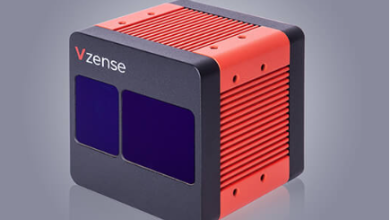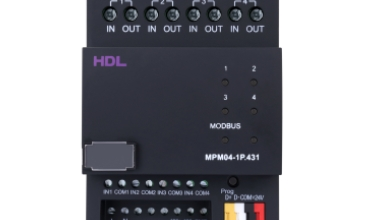Enhancing Security with Cutting-Edge Video Surveillance Solutions and Security Camera Software

In an ever-evolving world, security remains a paramount concern for individuals, businesses, and institutions alike. As technology continues to advance, so too does the effectiveness and versatility of security solutions. Among the most prominent innovations in this field are “Video Surveillance Solutions” and “Security Camera Software.” In this comprehensive guide, we will explore the vital role these technologies play in safeguarding our lives and assets.
The Evolution of Video Surveillance Solutions
What Are Video Surveillance Solutions?
Video surveillance solutions, often referred to as Closed-Circuit Television (CCTV) systems, are designed to monitor and record activities in a specific area or location. These solutions encompass a range of components, including cameras, recording devices, and software applications, working in unison to capture, store, and manage video footage.
The primary goals of video surveillance are:
Deterrence: The presence of visible cameras can deter potential criminals from committing unlawful activities, serving as a preventive measure.
Detection: Surveillance cameras are equipped with sensors that detect motion and other anomalies, triggering alerts when suspicious activity is detected.
Documentation: Video footage serves as critical evidence in investigations, aiding law enforcement and security personnel in identifying and prosecuting wrongdoers.
The Technological Advancements
Modern video surveillance solutions have come a long way from the grainy, low-resolution images of the past. Key technological advancements have transformed these systems into powerful tools for security and surveillance:
High-Definition Cameras: High-definition (HD) and Ultra High-Definition (UHD) cameras offer unparalleled clarity and detail, making it easier to identify individuals and objects in recordings.
IP Cameras: Internet Protocol (IP) cameras have become the norm, allowing for remote monitoring and access via the internet or local networks.
Night Vision: Infrared (IR) and low-light cameras enable surveillance in complete darkness, extending security capabilities to 24/7 monitoring.
Wireless Connectivity: Wireless cameras eliminate the need for extensive cabling, simplifying installation and expanding the range of deployment options.
The Role of Security Camera Software
While cameras are the eyes of a video surveillance system, the brain behind the operation is the security camera software. This software plays a pivotal role in managing and optimizing video surveillance solutions.
Features of Security Camera Software
Video Management: Security camera software allows users to view live and recorded video feeds from multiple cameras simultaneously. It provides a centralized platform for managing video content.
Motion Detection: Advanced algorithms analyze video streams to detect movement, triggering alerts or notifications when suspicious activity is identified.
Remote Access: Users can access live feeds and recorded footage remotely via web-based interfaces or mobile applications, ensuring real-time monitoring and response.
Storage and Retrieval: Security camera software efficiently stores and indexes video data, making it easy to retrieve specific footage when needed for investigation or analysis.
Analytics: Some software solutions incorporate artificial intelligence (AI) and machine learning to analyze video content, identifying patterns and anomalies that may go unnoticed by human operators.
Integration: Many security camera software systems can be integrated with other security and access control systems, creating a comprehensive security ecosystem.
Applications of Video Surveillance Solutions
Video surveillance solutions find applications in a wide range of settings, each with its unique security needs:
1. Home Security:
Homeowners use video surveillance to monitor their property, deter burglars, and keep an eye on children and pets.
2. Commercial and Retail:
Businesses utilize video surveillance to protect assets, prevent theft, monitor employee behavior, and enhance customer safety.
3. Transportation:
Airports, train stations, and public transport systems rely on surveillance to ensure passenger safety and prevent criminal activity.
4. Healthcare:
Hospitals and healthcare facilities employ video surveillance to monitor entrances, patient areas, and sensitive equipment.
5. Education:
Schools and universities use surveillance to enhance campus safety, deter vandalism, and investigate incidents.
6. Industrial:
Factories and warehouses employ video surveillance to secure valuable equipment, monitor production processes, and maintain worker safety.
7. Government and Law Enforcement:
Government agencies and law enforcement entities use video surveillance for public safety, crime prevention, and investigative purposes.
Leveraging AI for Enhanced Surveillance
One of the most exciting developments in video surveillance solutions is the integration of artificial intelligence (AI) and machine learning. AI-powered cameras and software have the potential to revolutionize the way we approach security.
AI-Enhanced Object Recognition:
AI algorithms can identify objects and individuals in video feeds, enabling automatic tracking and alerting when specific criteria are met.
Predictive Analytics:
AI can analyze historical data and identify patterns that suggest potential security threats, helping organizations take proactive measures.
Facial Recognition:
Facial recognition technology is becoming increasingly accurate and is used for access control and identifying persons of interest.
Behavioral Analysis:
AI can detect unusual behavior patterns, such as loitering or erratic movements, and trigger alerts.
Challenges and Considerations
While video surveillance solutions offer numerous benefits, they also come with challenges and considerations:
Privacy Concerns:
The proliferation of surveillance technology raises privacy concerns, prompting discussions about how data is collected, stored, and used.
Data Security:
Video surveillance systems generate vast amounts of data that must be secured against unauthorized access and cyber threats.
Legal and Compliance:
Different regions and industries have varying regulations regarding video surveillance, including data retention and consent.
Scalability:
Organizations must plan for the scalability of their surveillance systems as they grow.
Future Trends in Video Surveillance
The future of video surveillance promises even greater advancements:
1. 5G Connectivity:
The rollout of 5G networks will enable faster data transmission, enhancing the quality of live video feeds and remote access.
2. Edge Computing:
Cameras with onboard processing capabilities will perform analytics at the edge, reducing latency and bandwidth usage.
3. Cloud Integration:
Cloud-based storage and management solutions will simplify data storage and retrieval while offering scalability and remote accessibility.
4. Enhanced AI:
AI will continue to play a central role, with improved algorithms for object recognition, behavioral analysis, and predictive analytics.
5. 360-Degree Cameras:
Cameras capable of capturing a full 360-degree view will become more prevalent, reducing the number of cameras needed for comprehensive coverage.
Conclusion
In conclusion, video surveillance solutions and security camera software have evolved into indispensable tools for enhancing security and safety across various sectors. With advancements in technology, including AI integration, the future of video surveillance is poised for exciting developments that will further empower individuals and organizations to protect their assets and communities. As we navigate the ever-changing landscape of security, one thing is certain: video surveillance will continue to play a pivotal role in safeguarding our world.



